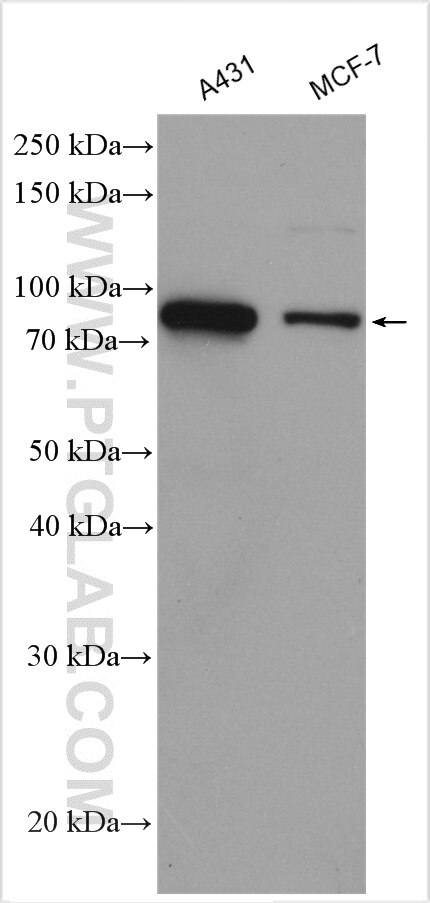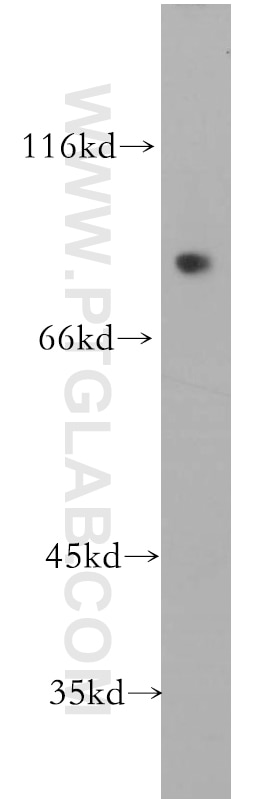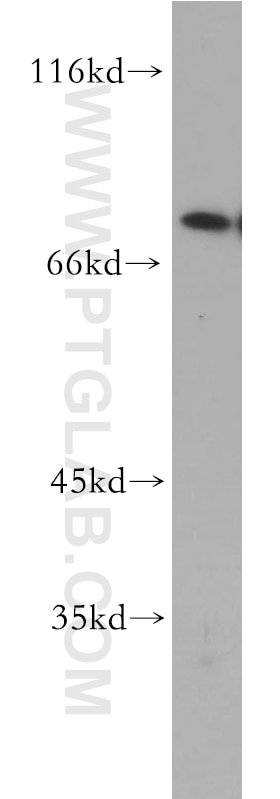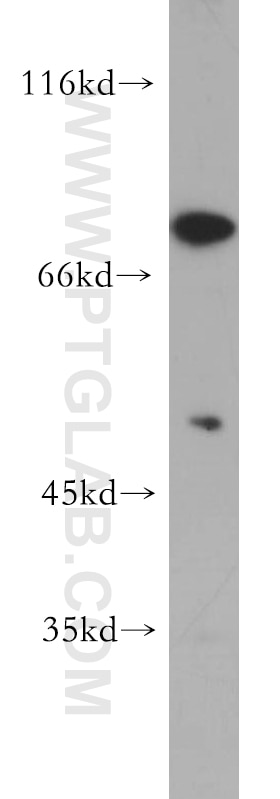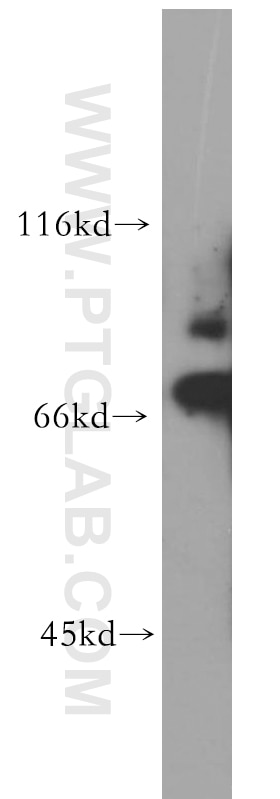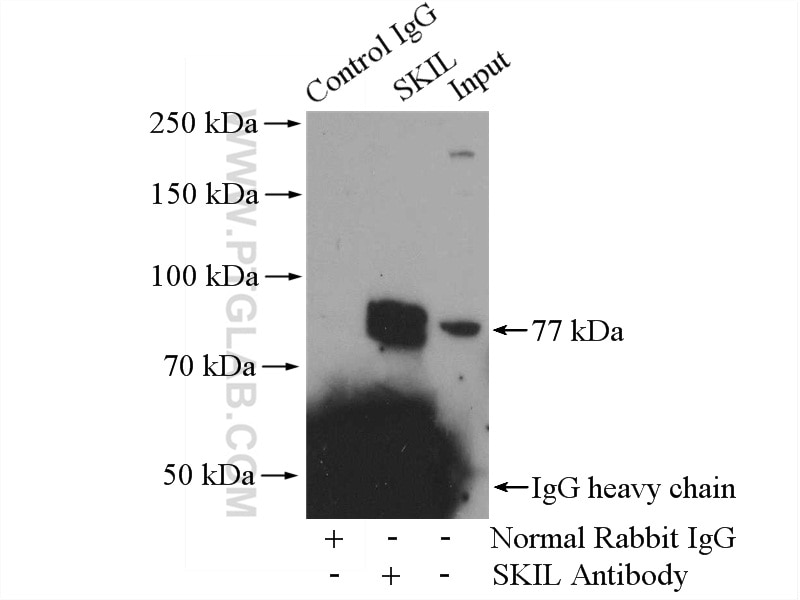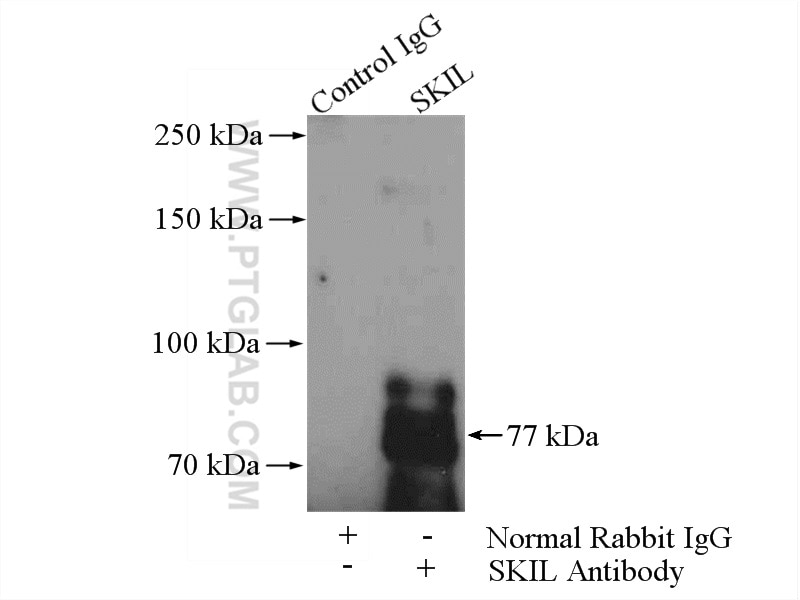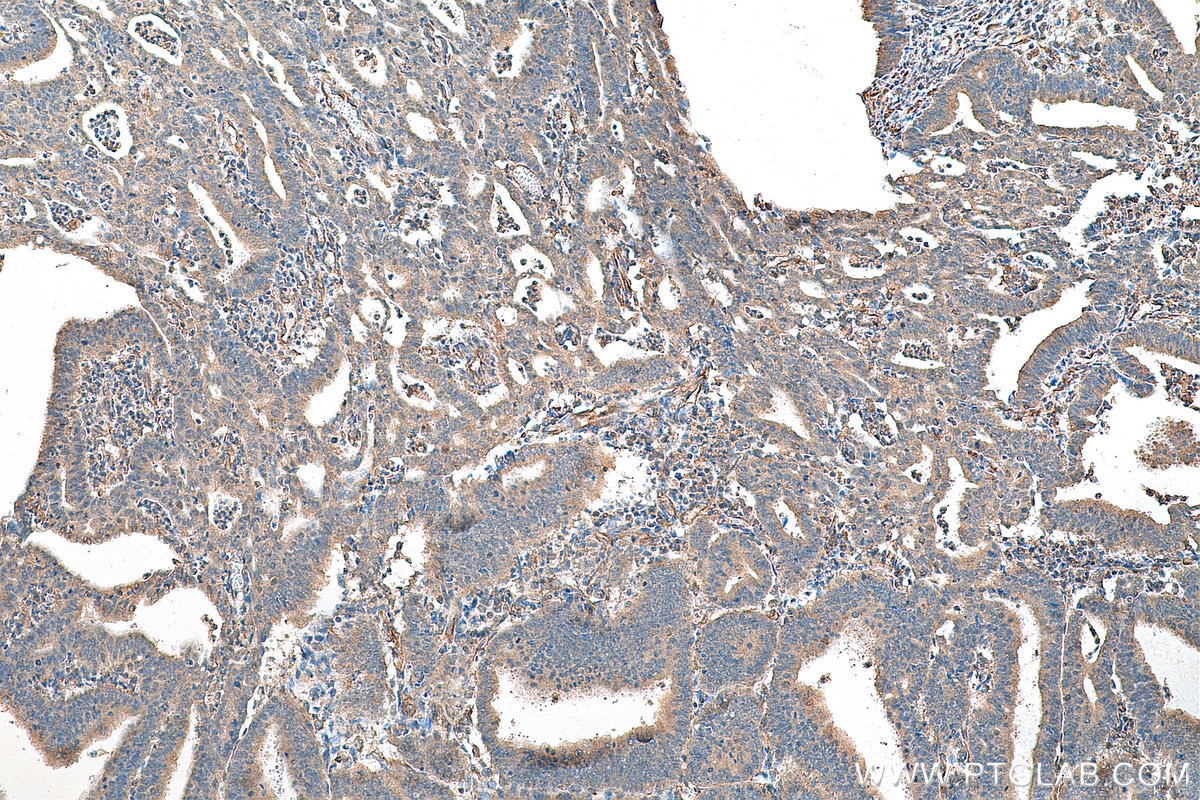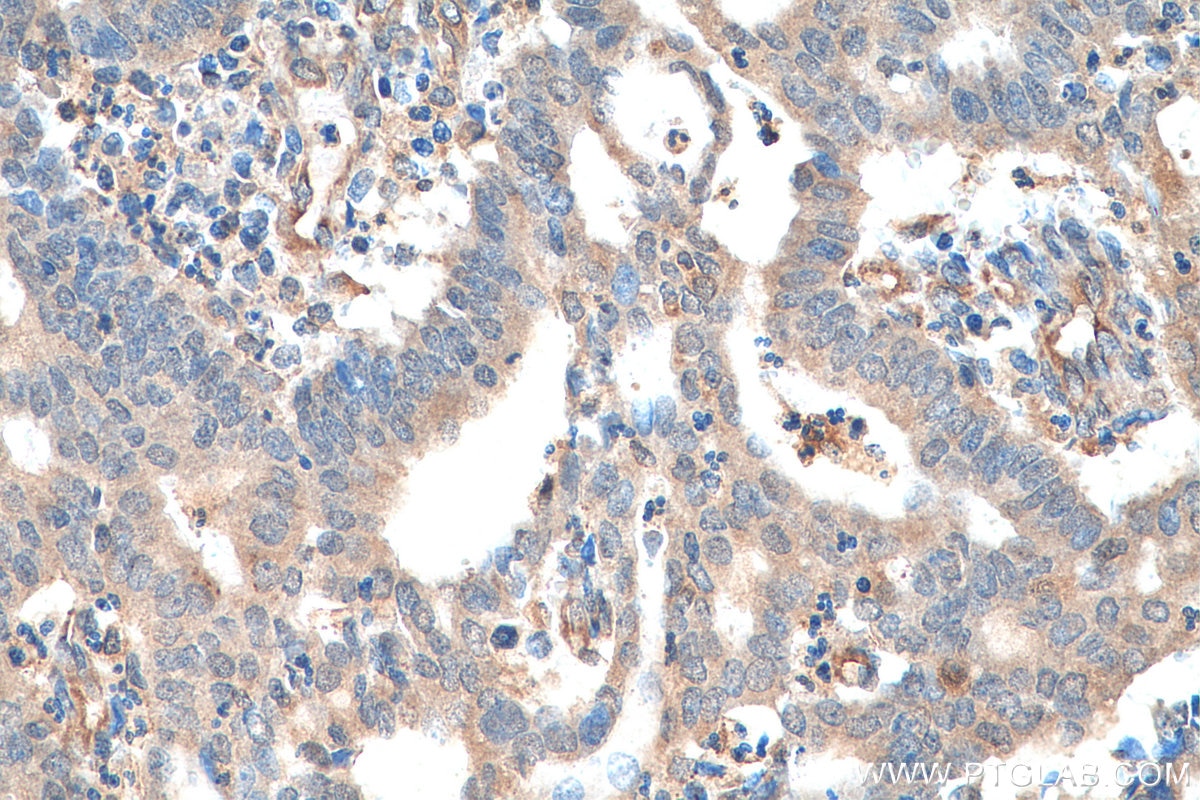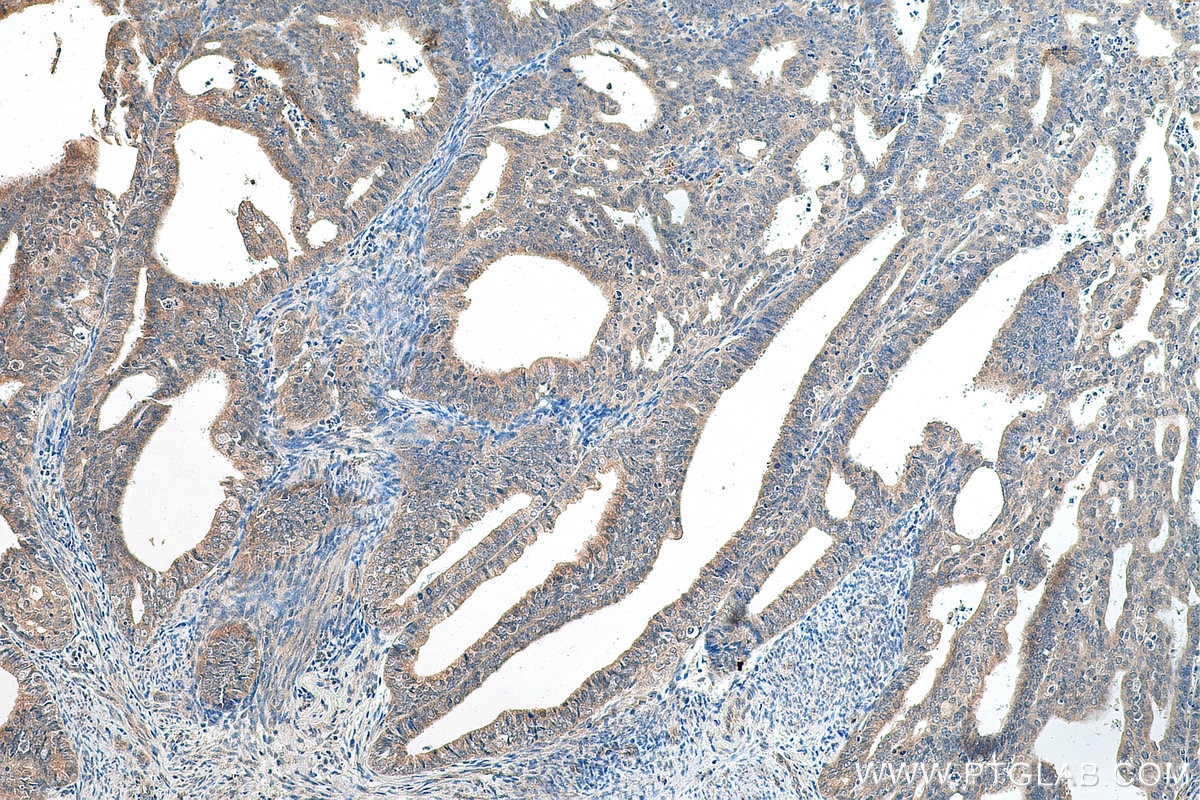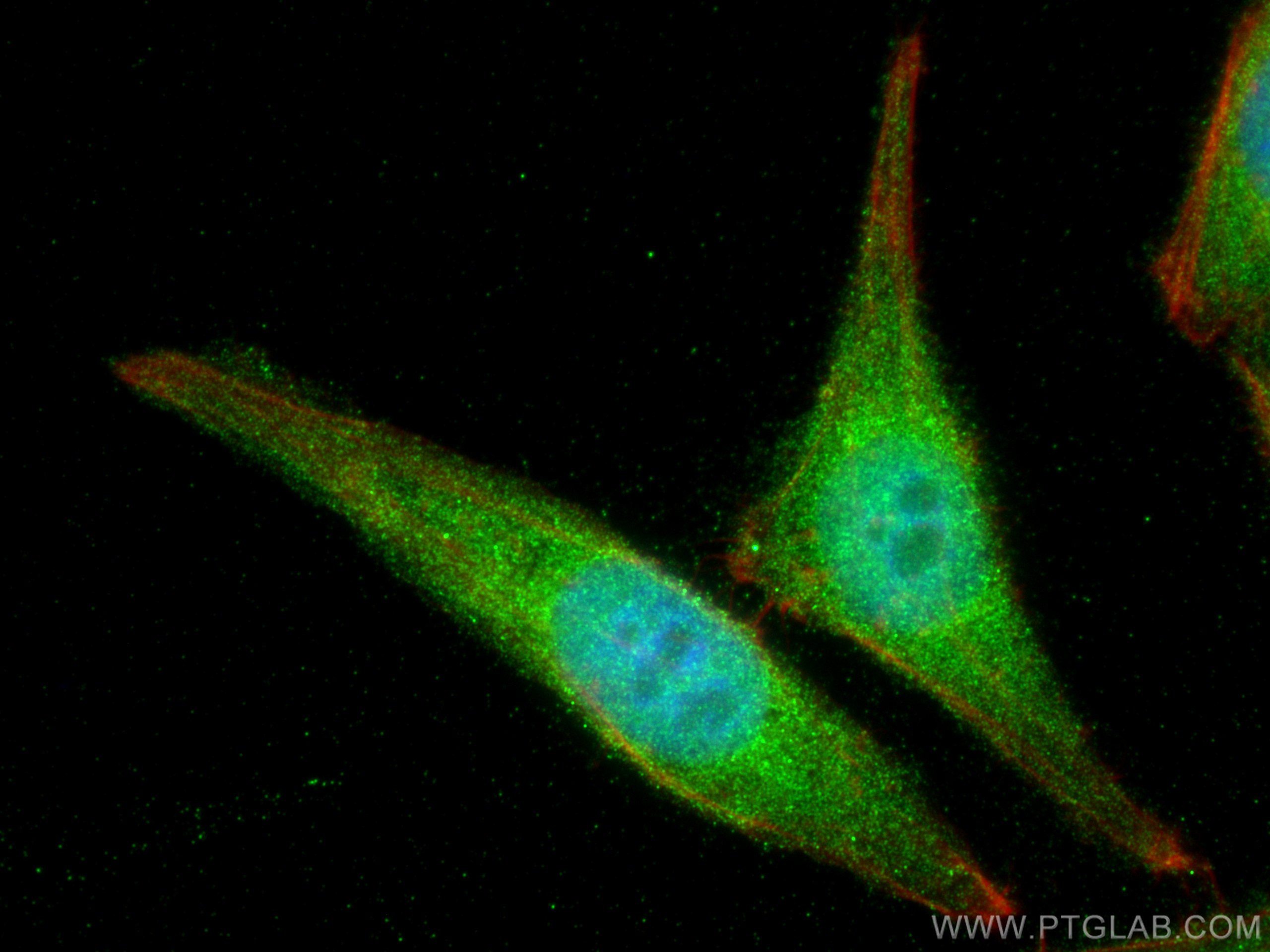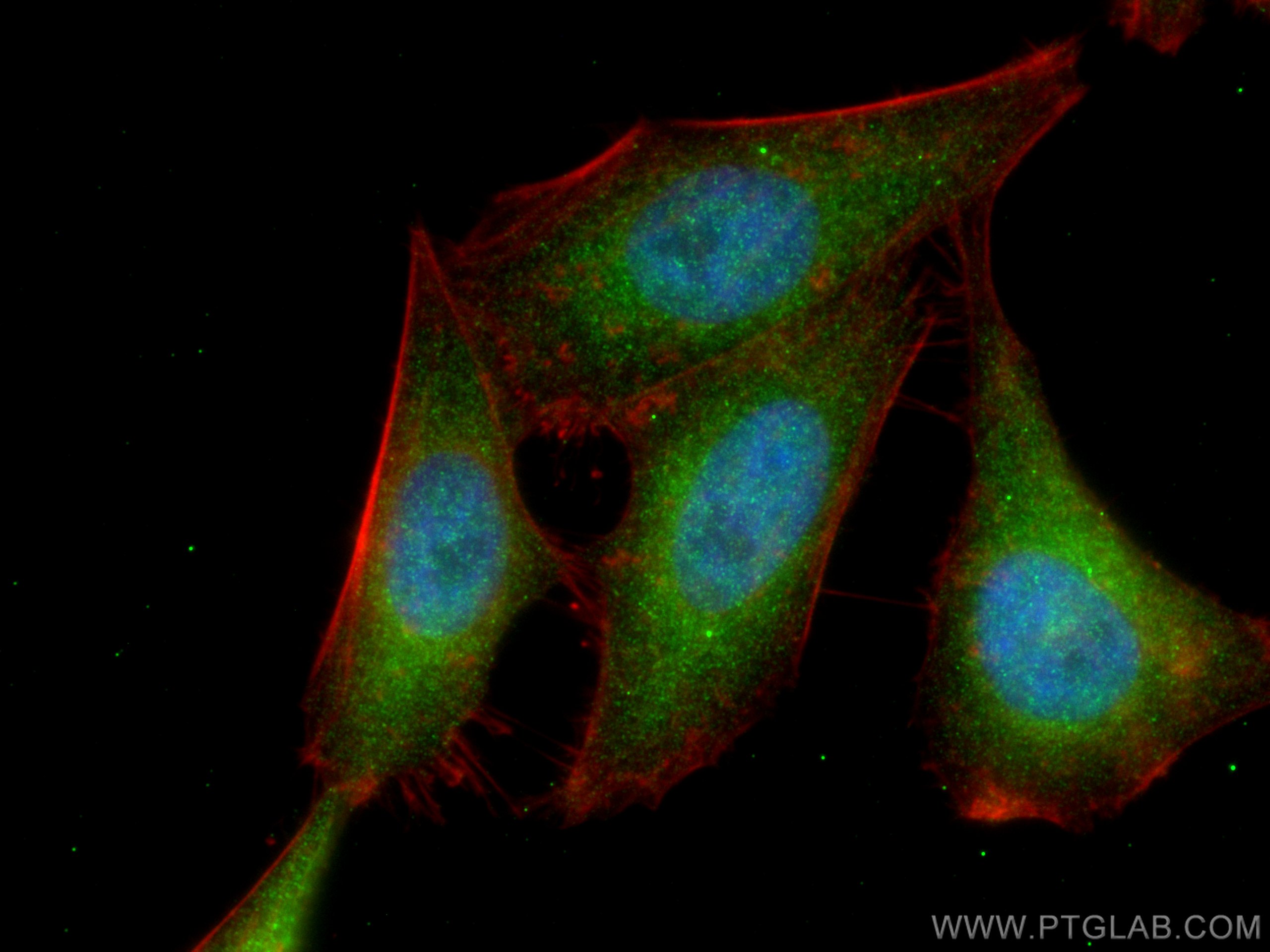- Phare
- Validé par KD/KO
Anticorps Polyclonal de lapin anti-SKIL
SKIL Polyclonal Antibody for WB, IP, IF, IHC, ELISA
Hôte / Isotype
Lapin / IgG
Réactivité testée
Humain et plus (1)
Applications
WB, IHC, IF/ICC, IP, CoIP, ELISA
Conjugaison
Non conjugué
N° de cat : 19218-1-AP
Synonymes
Galerie de données de validation
Applications testées
| Résultats positifs en WB | cellules A431, cellules HepG2, cellules MCF-7, tissu de muscle squelettique humain |
| Résultats positifs en IP | cellules HepG2 |
| Résultats positifs en IHC | tissu de cancer de l'endomètre humain, il est suggéré de démasquer l'antigène avec un tampon de TE buffer pH 9.0; (*) À défaut, 'le démasquage de l'antigène peut être 'effectué avec un tampon citrate pH 6,0. |
| Résultats positifs en IF/ICC | cellules HepG2, |
Dilution recommandée
| Application | Dilution |
|---|---|
| Western Blot (WB) | WB : 1:1000-1:8000 |
| Immunoprécipitation (IP) | IP : 0.5-4.0 ug for 1.0-3.0 mg of total protein lysate |
| Immunohistochimie (IHC) | IHC : 1:50-1:500 |
| Immunofluorescence (IF)/ICC | IF/ICC : 1:50-1:500 |
| It is recommended that this reagent should be titrated in each testing system to obtain optimal results. | |
| Sample-dependent, check data in validation data gallery | |
Applications publiées
| KD/KO | See 1 publications below |
| WB | See 10 publications below |
| IHC | See 2 publications below |
| IF | See 2 publications below |
| CoIP | See 2 publications below |
Informations sur le produit
19218-1-AP cible SKIL dans les applications de WB, IHC, IF/ICC, IP, CoIP, ELISA et montre une réactivité avec des échantillons Humain
| Réactivité | Humain |
| Réactivité citée | Humain, souris |
| Hôte / Isotype | Lapin / IgG |
| Clonalité | Polyclonal |
| Type | Anticorps |
| Immunogène | SKIL Protéine recombinante Ag5282 |
| Nom complet | SKI-like oncogene |
| Masse moléculaire calculée | 77 kDa |
| Poids moléculaire observé | 77 kDa |
| Numéro d’acquisition GenBank | BC059386 |
| Symbole du gène | SKIL |
| Identification du gène (NCBI) | 6498 |
| Conjugaison | Non conjugué |
| Forme | Liquide |
| Méthode de purification | Purification par affinité contre l'antigène |
| Tampon de stockage | PBS avec azoture de sodium à 0,02 % et glycérol à 50 % pH 7,3 |
| Conditions de stockage | Stocker à -20°C. Stable pendant un an après l'expédition. L'aliquotage n'est pas nécessaire pour le stockage à -20oC Les 20ul contiennent 0,1% de BSA. |
Informations générales
SKIL, also known as SnoN, is a mediator of the transforming growth factor-β (TGF-β) signaling pathway and exerts pro-oncogenic activity through inhibiting TGF-β/Smad pathway(PMID: 19114989). SKIL is involved in reduction of autophagy and subsequent tumor cell apoptosis in arsenic trioxide-treated promyelocytic leukemia and ovarian carcinoma. In addition, SKIL may regulate cell division or differentiation in response to extracellular signals.
Protocole
| Product Specific Protocols | |
|---|---|
| WB protocol for SKIL antibody 19218-1-AP | Download protocol |
| IHC protocol for SKIL antibody 19218-1-AP | Download protocol |
| IF protocol for SKIL antibody 19218-1-AP | Download protocol |
| IP protocol for SKIL antibody 19218-1-AP | Download protocol |
| Standard Protocols | |
|---|---|
| Click here to view our Standard Protocols |
Publications
| Species | Application | Title |
|---|---|---|
Cell Death Differ PIAS1 and TIF1γ collaborate to promote SnoN SUMOylation and suppression of epithelial-mesenchymal transition. | ||
Clin Transl Med NSUN2 promotes colorectal cancer progression by enhancing SKIL mRNA stabilization | ||
J Med Chem Structure-Guided Design of a Small-Molecule Activator of Sirtuin-3 that Modulates Autophagy in Triple Negative Breast Cancer. | ||
J Neurosci The Transcriptional Regulator SnoN Promotes the Proliferation of Cerebellar Granule Neuron Precursors in the Postnatal Mouse Brain. | ||
Mol Cell Proteomics Quantitative ubiquitylome analysis reveals specificity of RNF111/Arkadia E3 ubiquitin ligase for its degradative substrates SKI and SKIL/SnoN in TGF-β signaling pathway | ||
Apoptosis SKI knockdown suppresses apoptosis and extracellular matrix degradation of nucleus pulposus cells via inhibition of the Wnt/β-catenin pathway and ameliorates disc degeneration.
|
